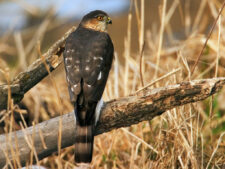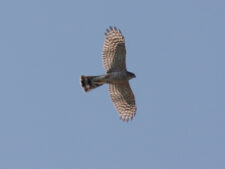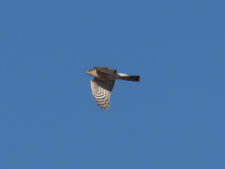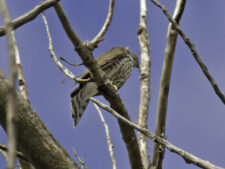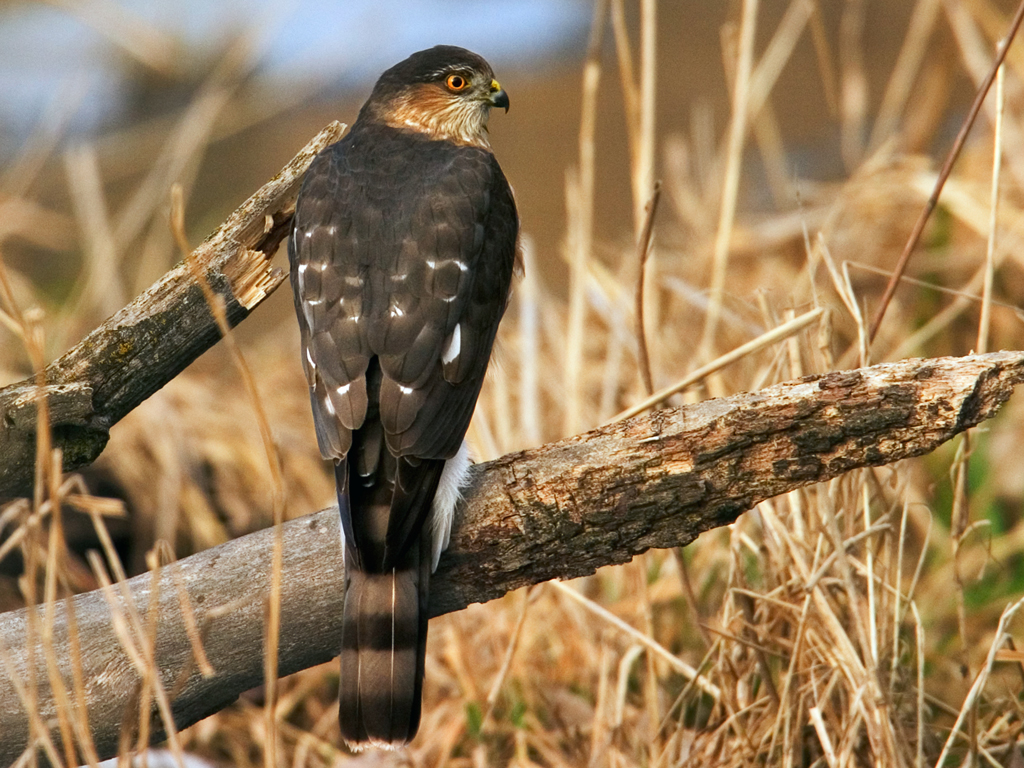
11 inches long with a 23 inch wingspan. The Sharp-shinned Hawk is a small hawk with broad wings that are short and rounded. The tail is long and squared off at the tip. The tail often appears notched when folded. It has long thin legs. The small rounded head does not project far beyond the wings when soaring. The female is considerably larger than the male. Adults have a red eye and black cap with a blue-gray back and upperwings. The white breast, belly and underwings are marked by fine, thin, reddish bars. The undertail coverts are white. The tail is blue-gray above and pale below with barred black bands. Immature birds have a yellow eye. They are brown with white underparts marked with thick brown streaks. The face has an indistinct pale eyebrow. The tail is brown above and pale below with barred dark bands. The terminal tail band is white. The Cooper’s Hawk (Accipiter cooperii) is very similar to a Sharp-shinned Hawk but Sharp-shinned Hawks are typically smaller, with shorter, squared-off tails and shorter heads that do not project as far when flying. As compared to Cooper’s Hawks, immature Sharp-shinned Hawks have thicker, denser streaking that extends farther down the belly and a thinner terminal band of white. Adults Sharp-shinned Hawk have less well-defined caps than Cooper’s Hawks.
The Sharp-shinned Hawk is a somewhat common migrant and winter visitor that may be seen from early September to mid-May.
The Sharp-shinned Hawk is found in woods and hedgerows where it feeds on small birds and mammals. It hunts from a concealed perch or in a low patrolling flight and captures small birds by surprise with quick lightening strikes. It often flies with several quick snappy wingbeats and a short glide, but it also soars. In the winter you may find this bird around bird feeders as it tries for easy pickings. It migrates in loose groups. The voice that is heard near the nest is a series of short sharp “kee, kee, kee”.
Disclaimer: The content of NatureSearch is provided by dedicated volunteer Naturalists of Fontenelle Forest who strive to provide the most accurate information available. Contributors of the images retain their copyrights. The point of contact for this page is: Phil Swanson.

